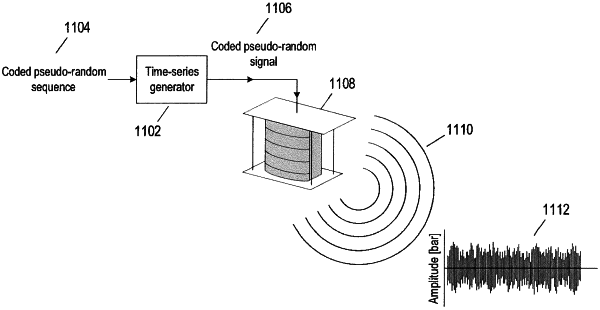| CPC G01V 1/3843 (2013.01) [G01V 1/306 (2013.01); G01V 1/3861 (2013.01); B63B 21/62 (2013.01); B63B 2211/02 (2013.01); G01V 2210/1293 (2013.01); G01V 2210/1423 (2013.01); G01V 2210/3246 (2013.01); G01V 2210/6224 (2013.01)] | 17 Claims |

|
1. A method for performing a marine survey with marine vibrators located in a body of water above a subterranean formation, the method comprising:
generating coded pseudo-random signals for driving the marine vibrators based on coded pseudo-random sequences;
using the coded pseudo-random signals to activate the marine vibrators to generate orthogonal coded pseudo-random sweeps that penetrate the subterranean formation;
recording wavefields reflected from the subterranean formation in seismic data generated by receivers located in the body of water; and
cross-correlating the seismic data with a signature of one of the coded pseudo-random sweeps to attenuate incoherent residual noise in the seismic data, wherein generating the coded pseudo-random signals for driving the marine vibrators comprises repeatedly using seed binary sequences to generate the coded pseudo-random sequences.
|